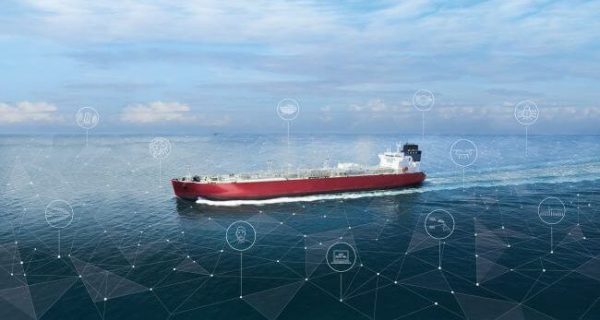Over the last decade communication technology in commercial shipping has been steadily improving with the widespread adoption of VSAT solutions and HTS. Increasing reliability, bandwidth and reducing costs have brought vessels much closer to being floating branch offices than ever before, argues Mr. Jamie Jones , Head of Service, GTMaritime.
The days of captains having to maintain tight control over the use of satellite terminals, checking that emails being sent were essential, etc are rapidly coming to an end.
Our founder and CEO, Robert Kenworthy remembers,
“Satellite technology and bandwidth connectivity has seen massive advances in the last two decades. When I was at sea, in the early 1980’s, we used HF radio. When ships were sent orders, they simply had to comply and get on with the job. A daily noon report back to the office was sufficient in those days.”
Mr Kenworthy continues, “20 years ago when we started GT, we were in the transition from Inmarsat C telex to e-mail. The Captain was the only person able to send and receive e-mails. Then quickly the e-mail became part of the ships network, so e-mail became available to all the officers on-board.”
“Now the ship is an extension of the office and e-mail is just as important but the percentage of the overall data that represents e-mail is reducing as applications, machinery and sensors onboard the modern ships are communicating ashore on a constant basis.”
As the availability of bandwidth increases on board, the market is booming with solutions to improve visibility of vessel operations from the shore through IoT (Internet of Things); greater access to information on board with higher resolution weather and charting updates; to tighter integration with shore-based systems such as ERP and solutions to improve crew welfare through access to the internet, social media and messaging
With this boom in technology brings greater levels of automation, better productivity and improved vessel performance. Just a few years ago it was common for crew to be manually compiling paper reports of planned maintenance, manually downloading charts from emails to upload into navigation systems, or reporting failures reactively with the risk of delay while waiting for replacement parts.
We see our customers moving to managing thousands of sensor readings to feed into shore-based machine learning models which have been trained to spot the signs of failure before it happens. This is improving performance by proactively replacing parts predicted to fail so reducing delays, costs and potential further damage.
Additionally, access to onboard video data is an increasing requirement, whether that be for audit purposes, diagnostics or investigating incidents.
All these applications (including those not mentioned here) have a significant positive effect on the industry, however, there are some potential downsides that will need to be managed to maximise the positive effects.
The main and most important downside is the advent of Cyber Security, which has been discussed in the industry for a number of years. However as the throughput increases and the ship has more communication touch points across the world, we are starting to see several high profile incidents that serve to highlight how much more needs to be done to tackle this deadly threat.
As the spectrum of systems being ‘connected’ has expanded beyond email and voice for essential communications to include safety critical systems at one end and crew welfare/entertainment at the other, a more comprehensive view of cyber security is required. It is no longer enough to simply deploy an anti-virus solution on end-point devices and forget about it.
Networks need to be designed to segregate systems, as various industry bodies such as the UK’s Institute of Engineering and Technology (IET), BIMCO and the American Bureau of Shipping (ABS) recommend.
The safety security elements no doubt have secure systems surrounding it but Shipping needs to be aware of the other entry points that are, in a highly connected environment, now connected and therefore vulnerable.
Thought also needs to be given to more pro-active protection within the network, such as with Unified Threat Management solutions. Shore-based systems also interact with the Vessel and therefore will also need to deliver the appropriate levels of protection.
The other area to manage carefully is that of the bandwidth available. With a significant boost in bandwidth and unlimited data plans it is easy to get into a mind-set of no longer considering how it is consumed. In the short term there may not be any immediate problem as the existing systems just work more effectively, however as more systems become connected and data volumes continue to grow there are bottlenecks on the horizon.
There are many ways to solve this from paying greater sums for higher data rates to network based QoS systems to manage data usage. These are reasonable solutions, indeed the same way in which land-based systems manage bandwidth; however, more intelligent systems are needed for granular control that can be remotely configured from the shore.
An intelligent data management platform, providing open interfaces, will understand the context of the data being sent over the communications links allowing for dynamic prioritisation based on active connection type and prioritisation of data based on its metadata. For example, edge IoT solutions that categorise sensor data before sending it over the network. This categorisation is something that can then be used in conjunction with all other traffic such as high priority emails, urgent video data to investigate an incident.
The aim of such solutions is to manage the competing demands, holistically maximising usage of available bandwidth but also recognising that satellite-based communications are still prone to interruption and higher latencies when compared to fixed line communications.
By Jamie Jones , Head of Service, GTMaritime
The views presented hereabove are only those of the author and not necessarily those of SAFETY4SEA and are for information sharing and discussion purposes only.






























































